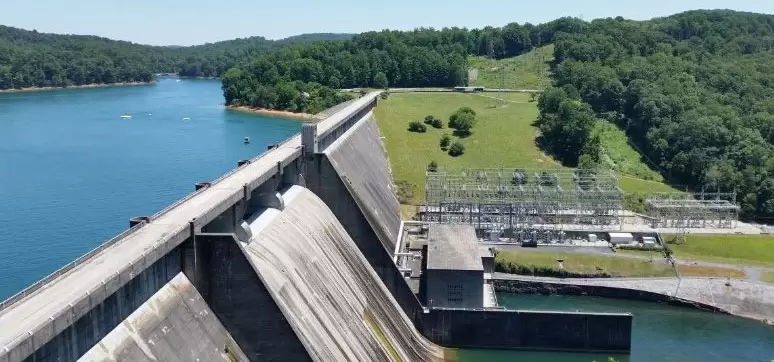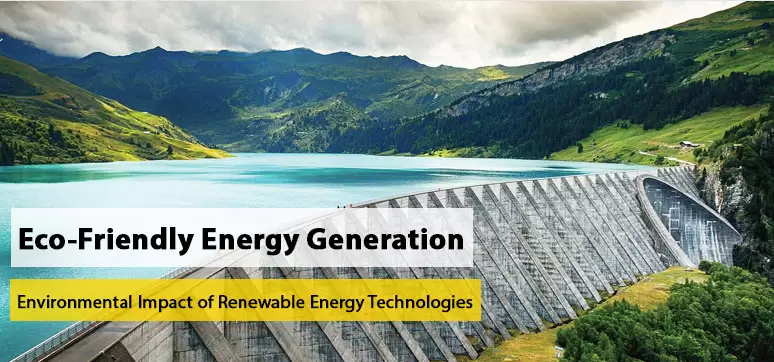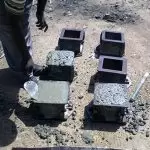Yes! Even these are not fool proof! This will include wind power, solar power, and geothermal energy, Biomass for electricity, hydro electric power and hydrokinetic energy.
Post your Requirement
We know of the problems caused by fossil fuels including pollution, damage to public health, loss of habitat and wildlife, water use, land use and global warming emissions.
However even these renewable resources run into problems and have environmental impacts which need to be considered. These can be minimized or avoided as these are becoming large suppliers of electricity to our earth.
Beginning with an impact, a study of various sources
Wind power: Harnessing power from the wind is the best way to generate electricity without toxic pollution or global warming effects. Wind is abundant, inexhaustible and affordable making it viable and a large scale alternative to fossil fuels.
Land use: Land used by a wind power set up is a lot because the wind turbines with the larger blades of the fan occupy a lot of area have to be placed 5-10 rotor diameters apart and 3-11 acres of land maybe used to extract a megawatt of power. But only from about 1 acre to 3-5 acres are disturbed and the rest of the area can be used to grow plants, create hiking trails or can be used for livestock grazing. Also unused land or unusable land can be used to plant the wind turbines. At sea or offshore turbines have larger blades and can hamper fishing, oil gas extraction, navigation or aquaculture.
Impact on wildlife and habitat
Effect on birds and bats can be there as in collision with the moving blades. But research in wildlife behaviour has shown that bats are most active when the wind speeds are low so the turbines are turned off during these times so the bats are not disturbed and then turned on with not much loss to the energy production. Wind farms offshore will affect fishes closely and other marine wildlife but sometimes help being an anchor as in like an artificial reef.
Public health and community:
Sound, visual impact are the two main public health concerns. The turbine and the blades make a lot of noise. It is aerodynamic. Overall sound levels depend on turbine designs and wind speed. Technical advances such as minimizing blade space imperfections and using sound- absorbing materials can reduce some of the noise generated turbines. Ccertain types of lighting constructions wind turbines can create an effect known as shadow flicker. Planting trees and installation of window awnings can help in such conditions.
Enquire Now for UPVC Windows
Water use: Does not have much of a role to play. Water is used to make steel and cement for the turbines. Solar PV cells do not use water for making electricity. Only during making of certain components. The PV cell manufacturing process includes a number of hazardous materials, most for cleanup and purification. These harmful chemicals are HCl, H2So4, Nitric acid, Hydrogen Flouride, 1,1,1,trichloro ethane and acetone. Workers may also be inhaling silicon dust.
Solar Power: Effects could be land use, habitat loss, water use, and use of dangerous products during the making of the solar panels.
Land use: Land degradation, habitat loss. Land used is mostly 3.5-1o acres per megawatt of output.
Thin film PV cells contain a number of toxic materials, more than traditional PV cells. If not handled in an effective way these can be a major health hazard. Anyway, these are recycled. While solar power generation does not lead to global warming emissions, emissions are associated with the other stages of solar life cycle e.g. manufacturing, material transportation, installation, maintenance, dismantlement and else. Emissions of o.o7-.18 pounds of carbon dioxide per kilowatthour. But this is much less than natural gas and coal that are being used for power generation.
Enquire Now for Solar Panels
Geothermal energy: Is harnessed where the geological `hot spots` are, places where the hot molten rock is close to the earth`s crust and produces hot water. Sometimes hot dry rock geothermal systems are created where you reach out to deeper geothermal resources. There is direct steam, flash or binary system used to create electricity from this energy. The cooling systems viz, water cooled or air-cooled also differ in the kind of environmental impacts caused by them.
Geo thermal power plants can have impact on both water quality and consumption. The hot water pumped from underground reservoirs contains many times- sulfur, salt and other minerals. Geo thermal energy facilities have closed loop water systems. In this retracted water is pumped back into the underground pool of water after it has been used for heat and electricity production. Water is contained within steel wall casings cemented to the surrounding rock. No contaminations have been notified in America.
Water in geothermal plants is also used for cooling and re-injection. They require 1700-4000 thousand gallons of water per mega watt hour. Using geothermal liquids for cooling rather than water reduces water usage in these plants.
Air emissions: These are open and closed loop systems which are important as far as air emissions go. In closed loops waste gases created are fed back into the ground after giving up their heat. In open loop systems Hydrogen sulfide, Carbon dioxide, ammonia, Methane and Boron are emitted. Hydrogen sulfide is most common.
Once into the atmosphere Hydrogen sulfide changes into Sulphur dioxide which reacts with moisture to create sulphuric acid causing acid rain. This can be absorbed by the blood stream and can cause heat and causing disease due to particulates in the air. However SO2 emission in coal plants for making thermal energy has 3o times more emissions of this gas per megawatt power generation. Mercury emissions are also produced by some plants. Mercury filter technology is used to do away with Mercury.
Scrubbers can also lower air emissions but they make a watery sludge made of caught materials including Sulfur, Vanadim, silica compounds, chlorides, arsenic, Mercury, Nickel and other heavy metals. This sludge has to be dumped in waste sites which then become less hazardous.
Land use: Land use depends on the terrain and size of the project. One other problem noted with Geo thermal power is subsidence of land. The land surface starts to sink because water from the geothermal reservoir has been removed to use its heat leaving a gap below. This is stabilized by reinjecting waste water back into Geothermal reservoirs after the water`s heat has been captured.
Geothermal plants can cause greater earthquake frequency. Enhanced Geothermal systems or hot dry rock systems can also increase the risk of smaller earthquakes. To prevent this from happening, Geothermal plants or sites must not be near major fault lines.
Enquire Now for Kitchen Sink
Biomass power plants are similar to fossil fuel power plants as in both need to burn feedstock to create heat and then electricity. The main difference being that biomass is renewable and fossil fuels take ages to replenish. Biomass is widely varied from energy crops like `switch grass`, waste, manure, forest produce and waste and urban waste. Type of feedstock and the way it has been used will determine life cycle global warming environment.
Hydroelectric power:This includes massive dams and small run-of –the river projects.

Land use: Size varies according to topography and size of HEP generators. Flooding of large tracts of land is one major impact. Forests and with them entire species of wild life have got eliminated because of submergence. People`s ancestral land wiped off and many times frugal rehabilitation has led to destruction of livelihood for many villages. It also has a major impact on aquatic systems. Fish and other organisms can get killed or damaged by turbine blades. Reservoir water is usually stagnant and different from fresh river water.
There are more sediments and nutrients and gives rise to weeds and algae. Weeds can crowd out other plant species. Fish need to be put in, those that eat up these weeds. Water is lost through evaporation in dammed reservoirs at a much higher rate than in flowing rivers.If too much water is stored in the reservoir downstream water becomes less and less water comes down to the plains. Also river water is warmer and has more dissolved oxygen as its continuously rejuvenated. Reservoir water is still not so flowing. It has low oxygen levels and is colder. It will flow down and damage plant and animal life.
After the area is flooded, the plants here decompose and create carbon dioxide and methane. This causes global warming emissions from these gases..
Hydrokinetic energy: or energy from sea waves and tidal waves is being created, though this is in experimental phase. Competition arises between this and other sea faring activities like fishing and shipping. There is effect on wildlife and disruption of their habitat. There is also generation of global warming emissions though much less than from coal using thermal plants.
So here was a runthrough on the various alternative and life saving renewable energies. Though they can and do have some negative impacts on your environment it is breathtakingly much lower than the traditional sources of energy. Research is on way to reduce these impacts and we can look forward to a more pleasant and harmonious earth.























Post A Comment